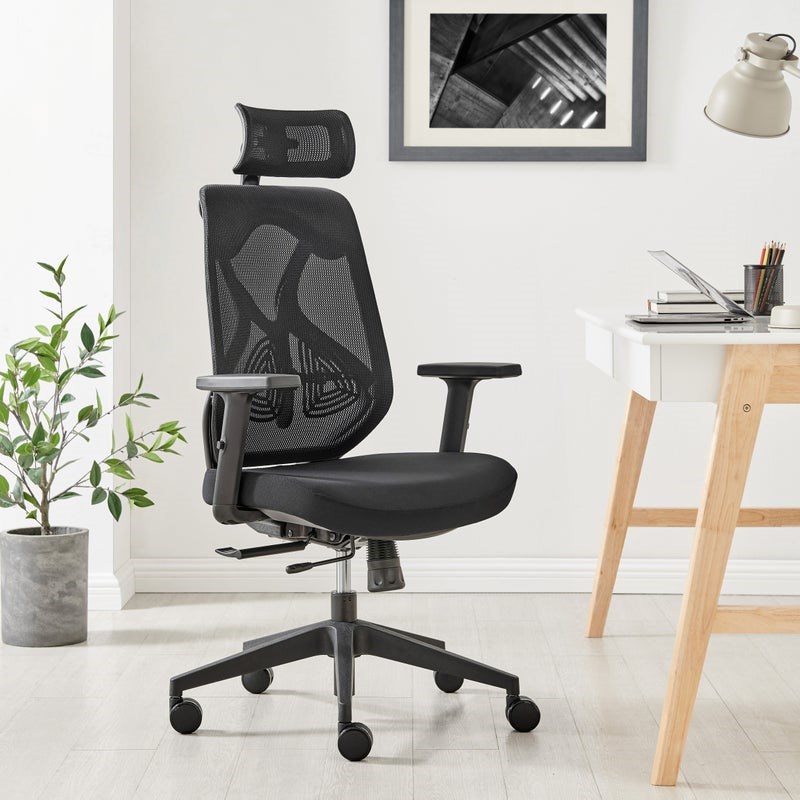Selecting the right office chair is crucial for comfort, productivity, and overall well-being, especially considering the amount of time spent sitting at a desk. Here are some factors to consider when choosing an office chair:
- Ergonomics: Look for chairs designed with ergonomic features such as adjustable seat height, lumbar support, backrest tilt, and armrests. Ergonomic chairs are customizable to support proper posture and reduce strain on the body.
- Adjustability: A good office chair should offer multiple adjustable features to accommodate various body types and preferences. Ensure the chair has adjustable seat height, armrests, backrest tilt, and lumbar support to fit your needs.
- Lumbar Support: Adequate lumbar support helps maintain the natural curve of the spine, reducing strain on the lower back. Choose a chair that provides adjustable lumbar support or has built-in lumbar support to ensure comfort during extended periods of sitting.
- Seat Size and Padding: The seat should be spacious enough to provide comfort and support without restricting movement. Additionally, consider the padding material to ensure it’s comfortable for long durations.
- Material and Breathability: Chairs come in various materials such as fabric, mesh, leather, or vinyl. Mesh chairs provide breathability, allowing air circulation to keep you cool, while leather or fabric chairs offer different aesthetics and comfort levels.
- Mobility and Stability: Look for chairs with smooth-rolling casters suitable for your office floor type (carpet, hardwood, etc.). Ensure the chair base is sturdy and offers stability when reclining or moving.
- Armrests: Adjustable and padded armrests can reduce strain on the shoulders and arms. They should allow your arms to rest comfortably and be adjustable to fit under your desk.
- Swivel and Rotation: A chair that swivels and rotates easily allows for convenient movement without straining or twisting your body.
- Budget and Durability: Consider your budget while also prioritizing quality and durability. A well-made, durable chair might cost more initially but can provide long-term comfort and support.
- Reviews and Recommendations: Read reviews from users or seek recommendations from colleagues or ergonomic specialists to gain insights into the chair’s comfort, durability, and ergonomic features.
Before making a purchase, it’s advisable to try sitting in the chair if possible or ensure the seller has a return policy that allows you to exchange or return the chair if it doesn’t meet your comfort needs. Ultimately, prioritize comfort, support, and adjustability when selecting an office chair to promote better posture and overall well-being.

